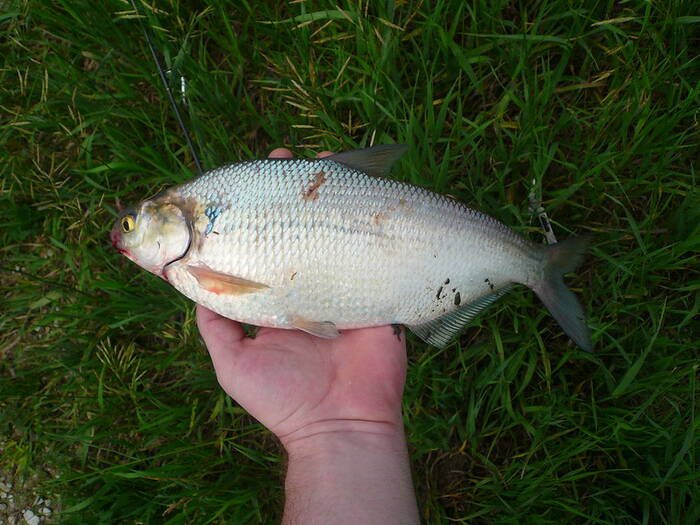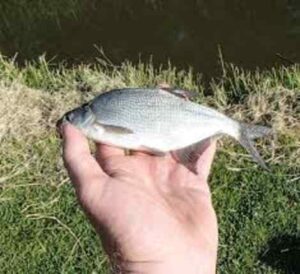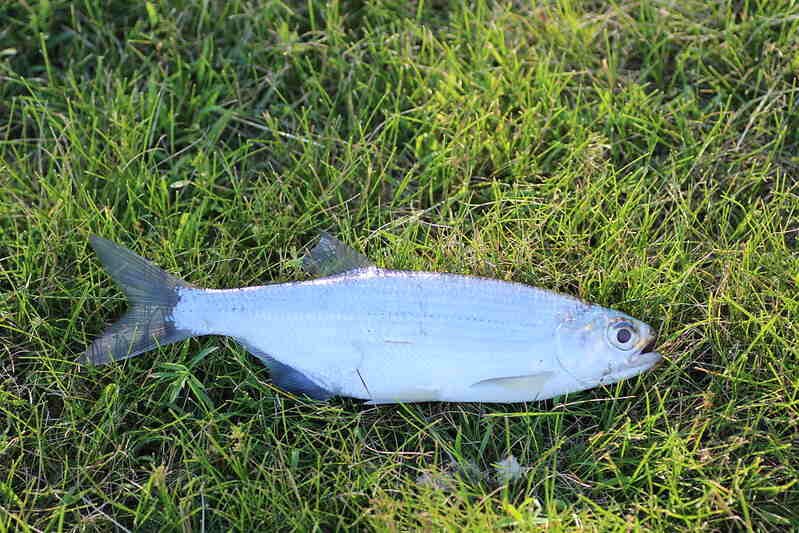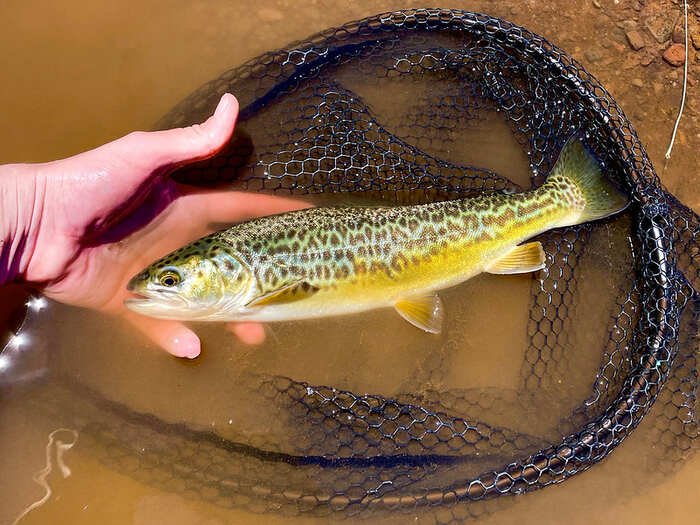Gizzard shad are one of the most common forage fish found in North American waters, and they play a critical role in the food chain. Anglers often target gizzard shad not only for bait but also for the challenge of catching these slippery, fast-moving fish.
Over the years, I’ve spent countless hours perfecting my techniques for catching gizzard shad, and in this guide, I’ll share everything you need to know to make your gizzard shad fishing trips successful.
Understanding Gizzard Shad
Before diving into the techniques, it’s essential to understand what gizzard shads are and why they are important. Gizzard shad (Dorosoma cepedianum) is a species of herring found in freshwater and occasionally brackish waters across North America. They are characterized by their deep bodies, small heads, and forked tails. They can grow up to 20 inches in length, but most of the ones you’ll catch are in the 6-12 inch range.
Gizzard shad are filter feeders, primarily consuming plankton and detritus, making them challenging to catch on traditional hooks and lures. However, they are incredibly effective bait for larger game fish like catfish, bass, and pike, making them highly sought after by anglers.
Essential Gear for Gizzard Shad Fishing
To successfully catch gizzard shad, you’ll need some specific gear:
- Cast Net: This is the most effective tool for catching gizzard shad. A 6- to 8-foot radius net with a mesh size of 3/8 inch is ideal. The mesh size is crucial because gizzard shad are small, and you don’t want them slipping through the net.
- Bait Bucket: A bait bucket with an aerator is essential for keeping your shad alive and healthy once you’ve caught them. Gizzard shad are quite delicate and can die quickly if not properly cared for.
- Fish Finder: Gizzard shad often travel in schools, and a fish finder can help you locate them more efficiently. Look for large clusters of fish near the surface or in mid-water columns.
- Chumming Bucket: Some anglers use a chumming bucket to attract shad to the area, especially in larger bodies of water. A simple bucket filled with a mixture of oatmeal and water can work wonders.
- Proper Attire: Since you’ll be handling nets and wet fish, it’s best to wear clothes that you don’t mind getting dirty or wet. Non-slip shoes are also recommended, as boat decks can get slippery.
Finding Gizzard Shad
Gizzard shad are highly sensitive to environmental conditions, so knowing where and when to look for them is half the battle.
Seasonal Patterns
- Spring and Fall: Gizzard shad are most active in the spring and fall when water temperatures are moderate (50-70°F). During these times, they are often found in shallow waters near shorelines, creeks, and river mouths.
- Summer: In the summer, they move to deeper waters to escape the heat. Look for them in the early morning or late evening when they come closer to the surface to feed.
- Winter: In colder months, gizzard shad tend to gather in deeper water where the temperature is more stable. They become less active, which makes catching them more difficult.
Habitat Preferences
- Lakes and Reservoirs: Gizzard shad prefers still or slow-moving waters like lakes, reservoirs, and ponds. They often gather near the surface of these bodies of water.
- Rivers and Streams: In rivers and streams, gizzard shad are usually found in slower-moving sections, backwaters, or areas with plenty of submerged vegetation.
- Structures: Look for shad around structures like docks, bridges, and fallen trees, as these areas provide cover and attract plankton.
Techniques for Catching Gizzard Shad
Using a Cast Net
Using a cast net is the most effective method for catching gizzard shad. Here’s how to do it:
- Step 1: Locate the Shad. Use your fish finder or look for visual cues like jumping fish or ripples on the water’s surface.
- Step 2: Approach Quietly. Gizzard shad are sensitive to noise, so approach the area quietly. If you’re on a boat, turn off the motor and drift into position.
- Step 3: Cast the Net. Hold the cast net properly with the horn (top part) in one hand and the weighted edge in the other. Open the net as wide as possible and throw it with a spinning motion to spread it out. The goal is to have the net land flat and fully open on the water’s surface.
- Step 4: Retrieve the Net. Once the net hits the water, allow it to sink for a few seconds, then pull it back in using the hand line. Gizzard shad are usually caught in the lower half of the net.
- Step 5: Transfer to Bait Bucket. Quickly transfer the shad to your bait bucket, ensuring the aerator is running to keep them alive.
Chumming
Chumming can be an effective way to draw gizzard shad to your location:
- Step 1: Prepare the Chum. To make a thick paste, combine oatmeal and water. Some anglers also add canned cat food or fish meal to increase the scent.
- Step 2: Distribute the Chum. Toss small amounts of chum into the water around your fishing spot. The goal is to create a scent trail that attracts the shad without overfeeding them.
- Step 3: Use the Cast Net. Once you notice shad coming to the surface to feed on the chum, cast your net to capture them.
Keeping Gizzard Shad Alive
Gizzard shad are notoriously fragile and can die quickly if not handled properly. Here are some tips for keeping them alive:
- Use an Aerator: An aerated bait bucket is essential. Gizzard shad requires a lot of oxygen, and an aerator helps maintain the necessary oxygen levels in the water.
- Avoid Overcrowding: Don’t overcrowd your bait bucket. Gizzard shad needs space to swim, so keep the number of fish in the bucket to a minimum.
- Keep the Water Cool: Gizzard shad does better in cooler water. If possible, add some ice to the bait bucket to lower the temperature slightly, but avoid making it too cold.
- Change the Water: If you’re keeping shad for an extended period, periodically change the water in the bait bucket to remove waste and maintain oxygen levels.
Using Gizzard Shad as Bait
Now that you’ve caught some gizzard shad, it’s time to use them as bait. How to maximize them is as follows:
Live Bait
- Hook Placement: Hook the shad through the nostrils or just behind the dorsal fin. This allows them to swim naturally and stay alive longer.
- Rigging: Use a slip sinker rig or a simple float rig to present live shad. Cast near structures or drop-offs where predator fish are likely to be hiding.
Cut Bait
- Preparation: If you prefer to use cut bait, slice the shad into chunks or fillets. Cut bait releases more scent into the water, making it effective for attracting catfish and other bottom feeders.
- Rigging: Use a circle hook or a treble hook to secure the cut bait. Fish it on a Carolina rig or a bottom rig to keep it near the bottom where larger fish are feeding.
Tips and Tricks for Success
- Stay Stealthy: Gizzard shad are sensitive to noise and movement. Approach your gizzard shad fishing spot quietly and avoid sudden movements that could scare them away.
- Practice Casting: If you’re new to using a cast net, practice on land before heading out. Proper casting technique is crucial for maximizing your catch.
- Watch the Weather: Gizzard shad is more active on overcast days and in low-light conditions. To get the greatest results, plan your fishing trips appropriately.
- Time of Day: Early morning and late evening are prime times for gizzard shad fishing. They are more likely to be near the surface during these times, making them easier to catch with a cast net.
Location is Key
Finding the right spot is half the battle. Gizzard shad thrive in areas with slow-moving or still water, such as reservoirs, lakes, and the backwaters of rivers. They prefer areas with a good amount of vegetation or submerged structures, which provide both food and protection. When fishing from shore, look for calm coves, inlets, or areas near dams. If you’re on a boat, use your fish finder to locate schools of shad in deeper waters.
The Right Gear
When it comes to gear, light tackle is your best bet. Gizzard shad have relatively soft mouths, so a light-action rod with a sensitive tip helps you detect subtle bites without tearing the hook out. A small spinning reel with a 4-6 lb test line is usually sufficient. For bait, small hooks (sizes 8 to 12) work well, especially when paired with tiny pieces of worm, dough balls, or small flies that mimic plankton.
Baiting Techniques
Gizzard shad are filter feeders, primarily feeding on microscopic plankton. This can make them tricky to catch using traditional bait. However, I’ve had success using small pieces of worm or dough baits that mimic their natural food. If you’re using a cast net to catch them for bait, it’s all about timing and location. Early morning or dusk, when shad are near the surface, is the best time to throw your net. Make sure to use a fine-mesh net since gizzard shad are small and can easily slip through larger mesh sizes.
Presentation and Patience
Presentation is crucial when fishing for gizzard shad. Since they are filter feeders, they don’t strike bait aggressively. Instead, they are more likely to nibble. A slow, gentle retrieve works best. Allow the bait to drift naturally in the water column, mimicking the small particles they feed on. Be patient and ready to set the hook gently at the slightest tap. Too much force can easily pull the hook from their soft mouths.
Using Gizzard Shad as Bait
If you’re fishing for other species, gizzard shad make excellent bait. Their oily flesh attracts predators like catfish, striped bass, and largemouth bass. When using them as bait, it’s best to keep them alive or as fresh as possible. Cut bait is also effective; simply cut the shad into chunks and use them on a larger hook.
Conservation and Legal Considerations
Always check local regulations before fishing for gizzard shad. In some areas, they are protected, or there may be limits on how many you can catch or use as bait. Practice ethical fishing by not overharvesting and releasing any unwanted catch promptly.
Final Thoughts
Gizzard shad fishing can be both rewarding and challenging. Their behavior and feeding habits require a different approach than many other fish, but with the right techniques and a bit of patience, you can have a successful outing. Whether you’re looking to catch them for bait or simply enjoy the pursuit, gizzard shad offer a unique fishing experience. So, next time you head out, keep these tips in mind, and happy fishing!



